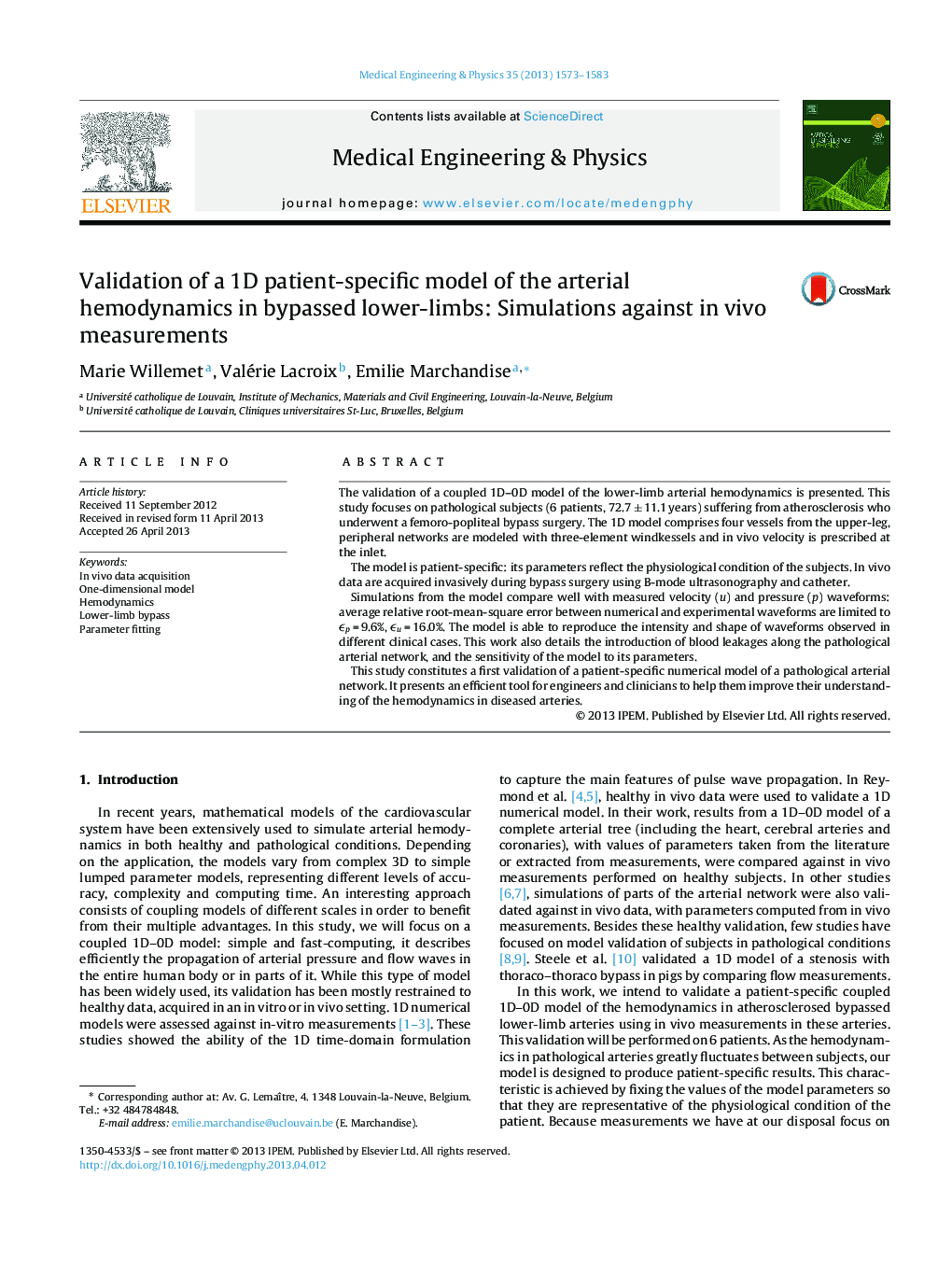| Article ID | Journal | Published Year | Pages | File Type |
|---|---|---|---|---|
| 875772 | Medical Engineering & Physics | 2013 | 11 Pages |
The validation of a coupled 1D–0D model of the lower-limb arterial hemodynamics is presented. This study focuses on pathological subjects (6 patients, 72.7 ± 11.1 years) suffering from atherosclerosis who underwent a femoro-popliteal bypass surgery. The 1D model comprises four vessels from the upper-leg, peripheral networks are modeled with three-element windkessels and in vivo velocity is prescribed at the inlet.The model is patient-specific: its parameters reflect the physiological condition of the subjects. In vivo data are acquired invasively during bypass surgery using B-mode ultrasonography and catheter.Simulations from the model compare well with measured velocity (u) and pressure (p) waveforms: average relative root-mean-square error between numerical and experimental waveforms are limited to ϵp = 9.6%, ϵu = 16.0%. The model is able to reproduce the intensity and shape of waveforms observed in different clinical cases. This work also details the introduction of blood leakages along the pathological arterial network, and the sensitivity of the model to its parameters.This study constitutes a first validation of a patient-specific numerical model of a pathological arterial network. It presents an efficient tool for engineers and clinicians to help them improve their understanding of the hemodynamics in diseased arteries.
